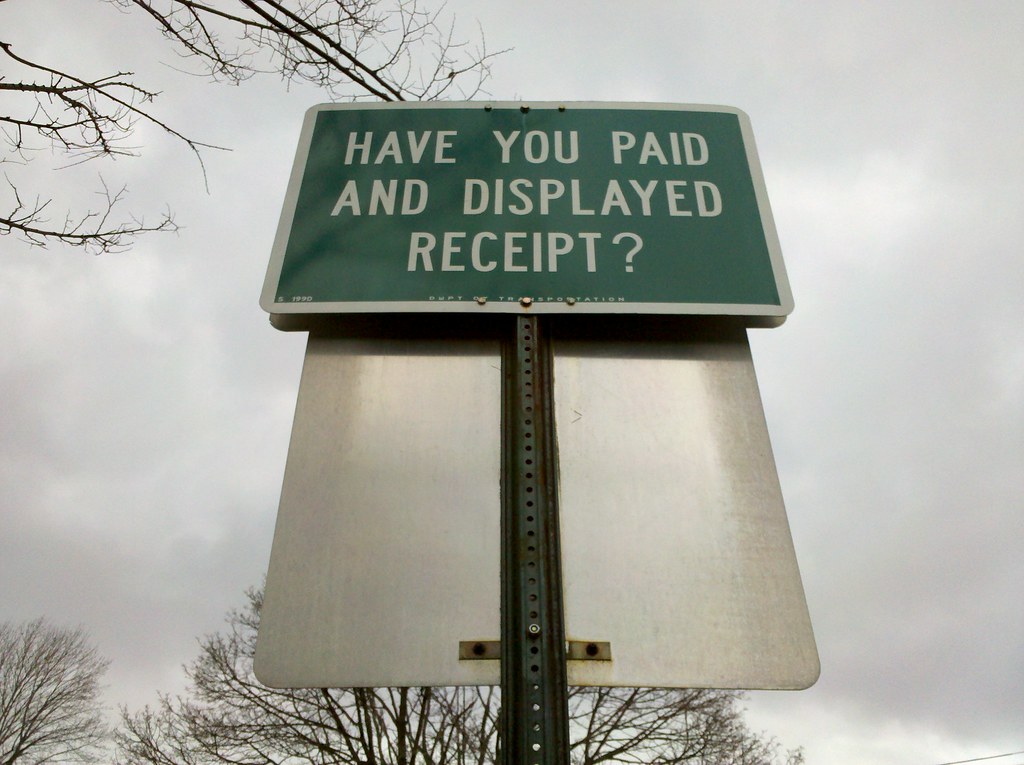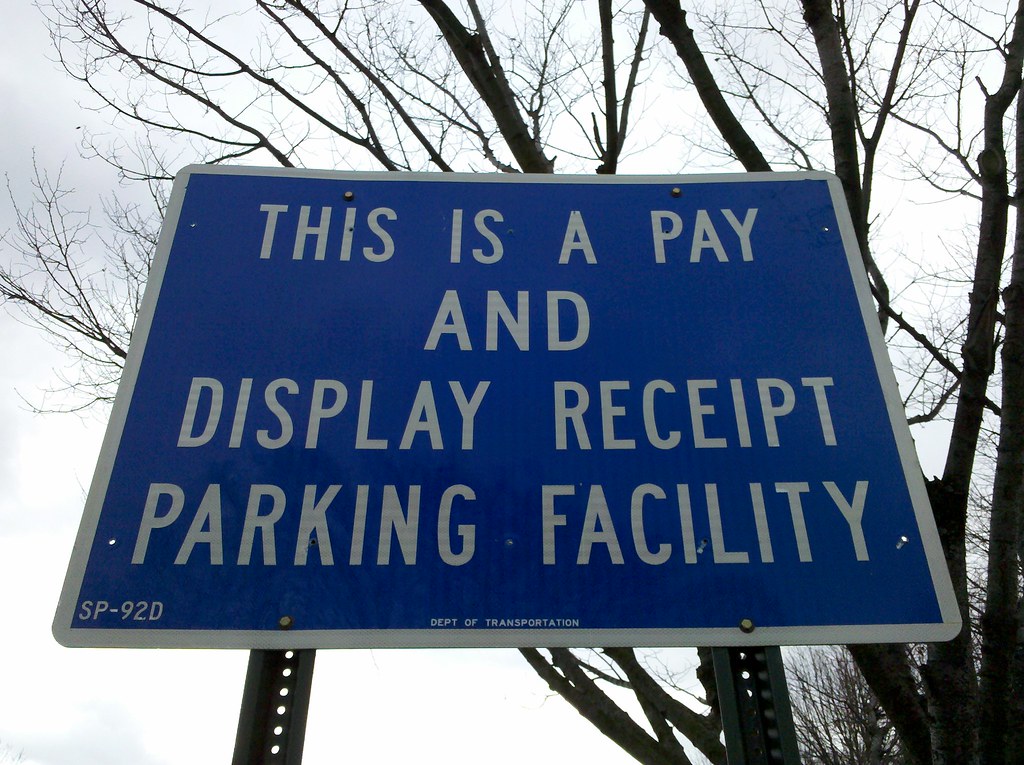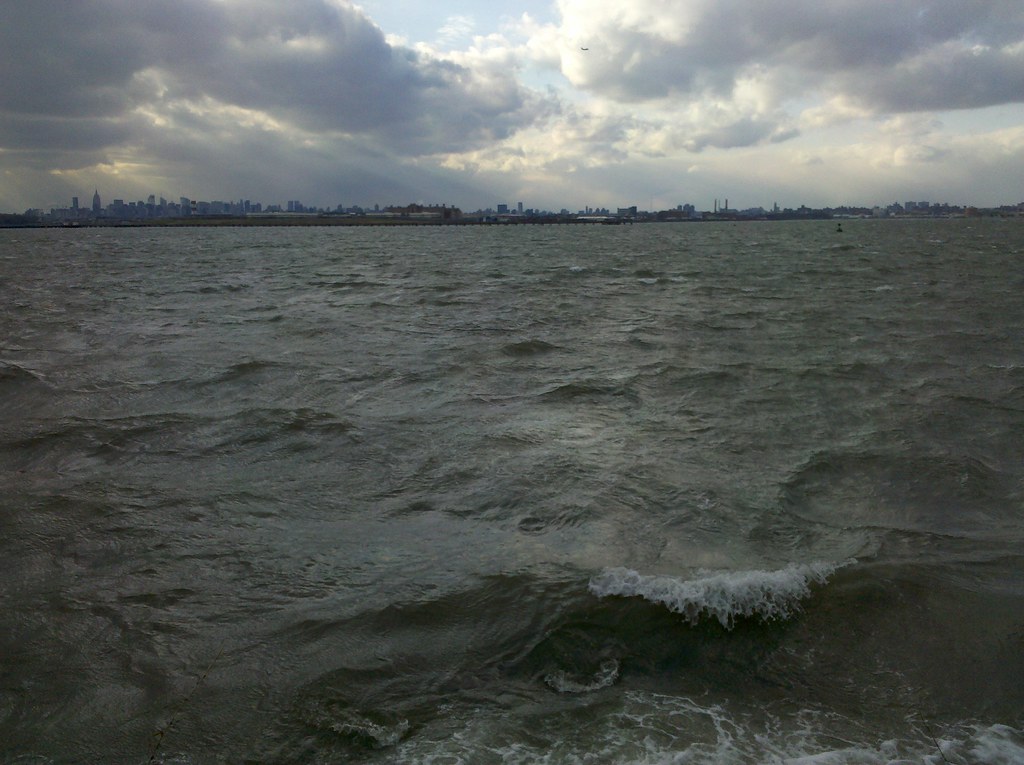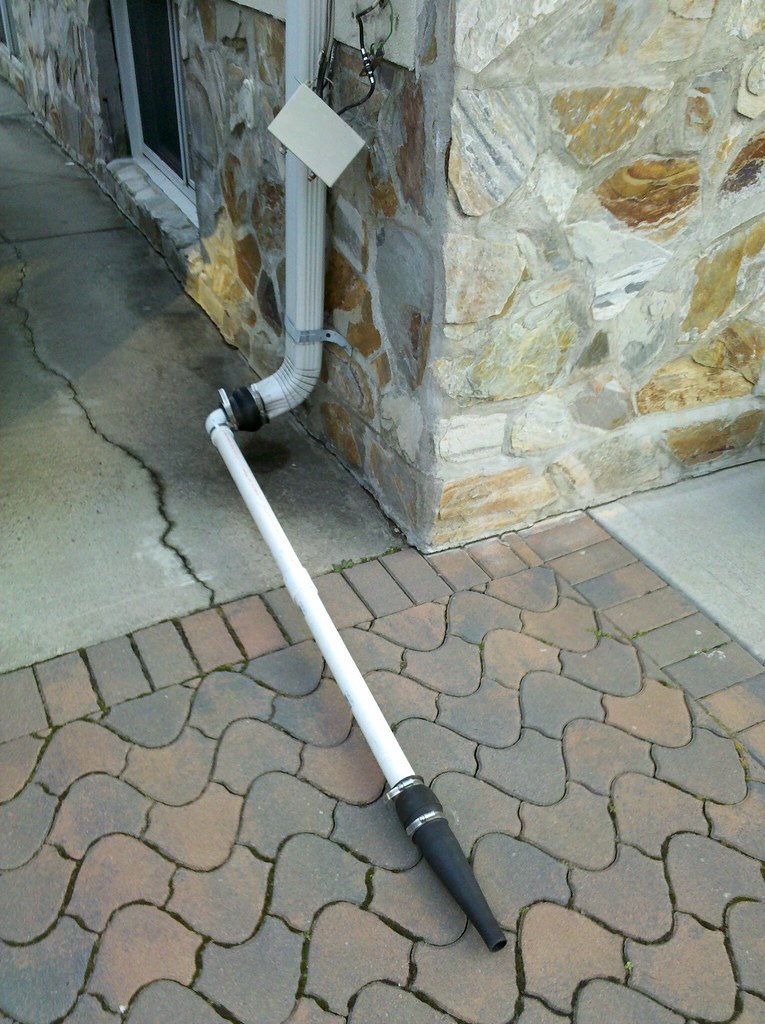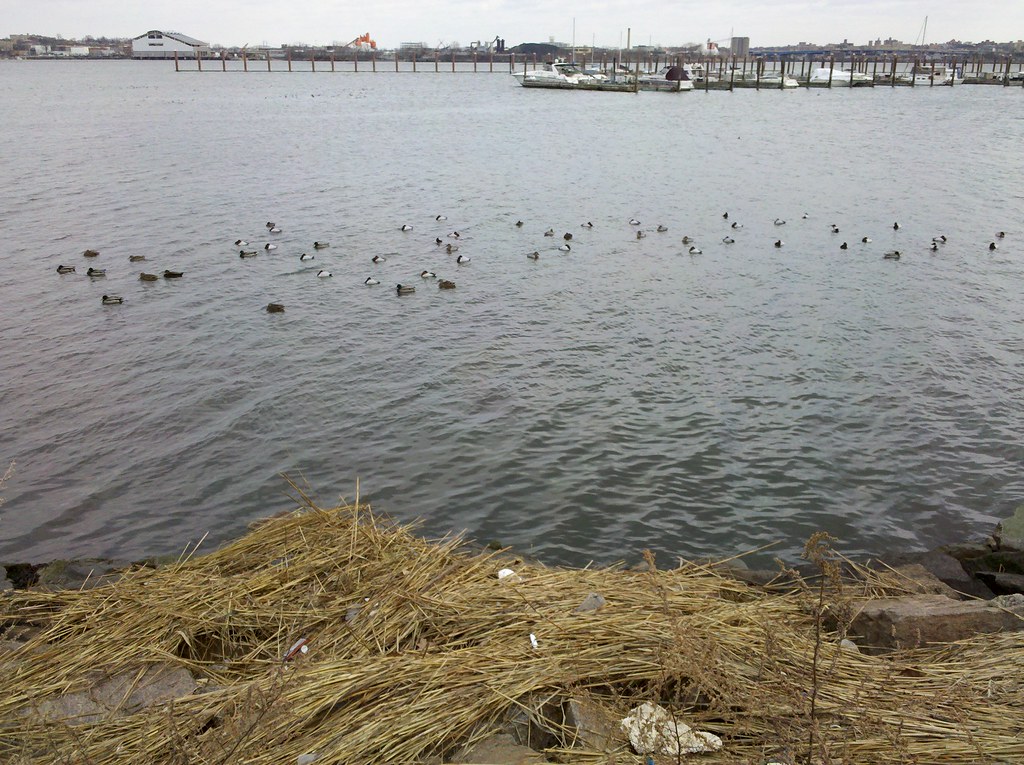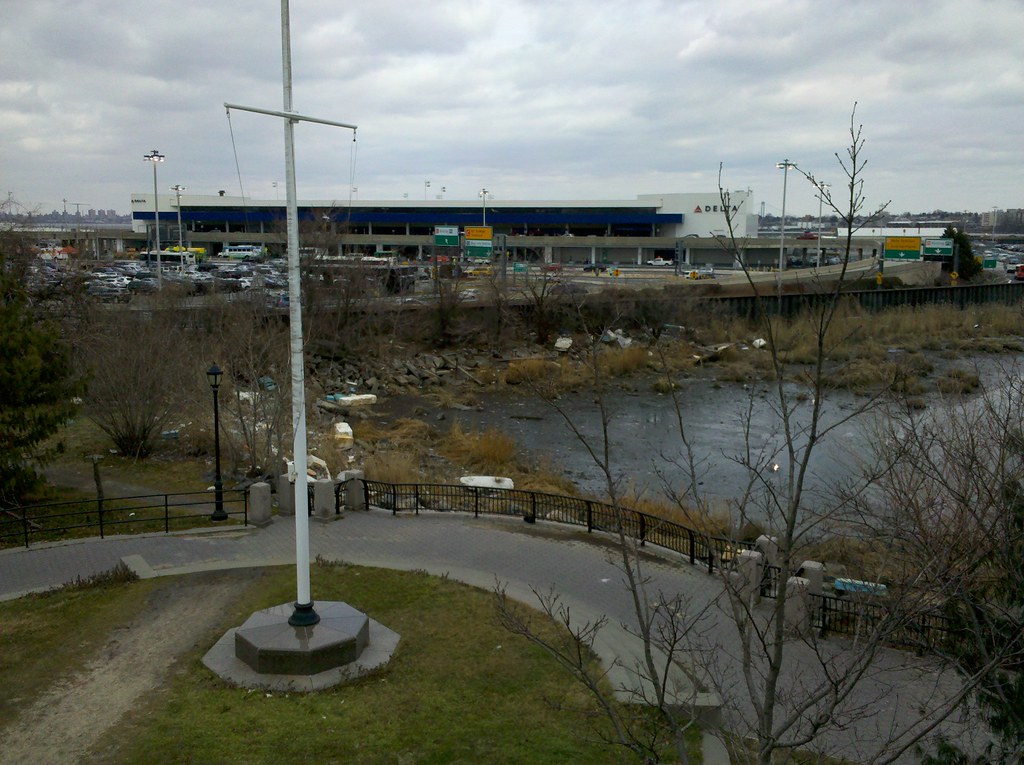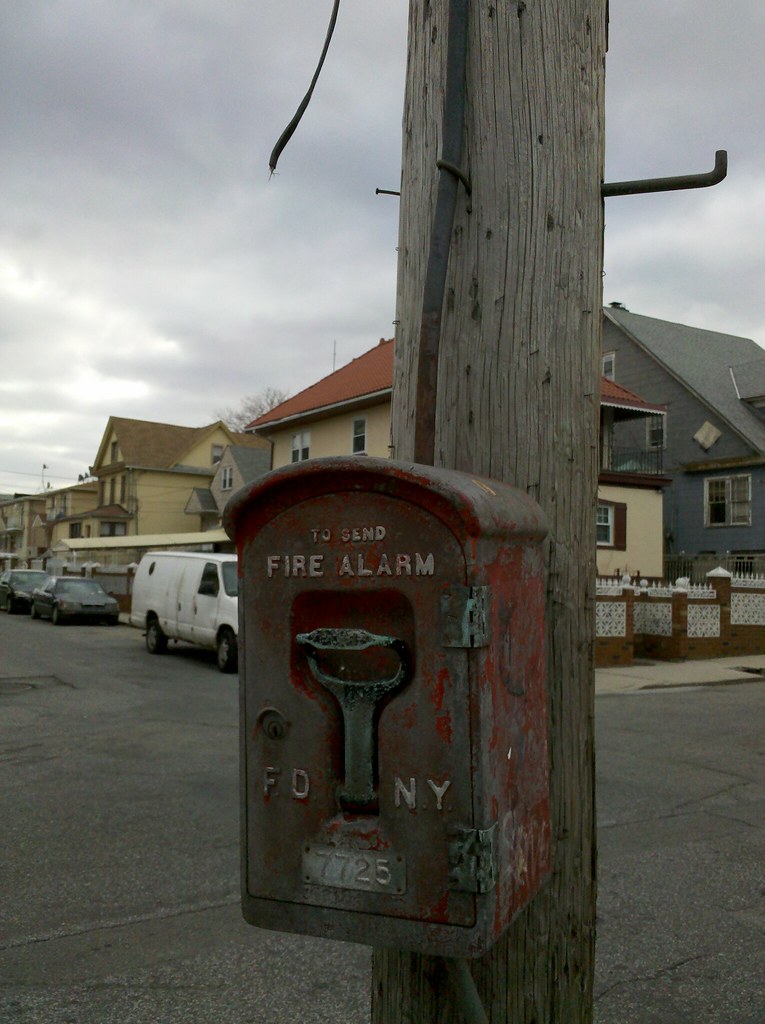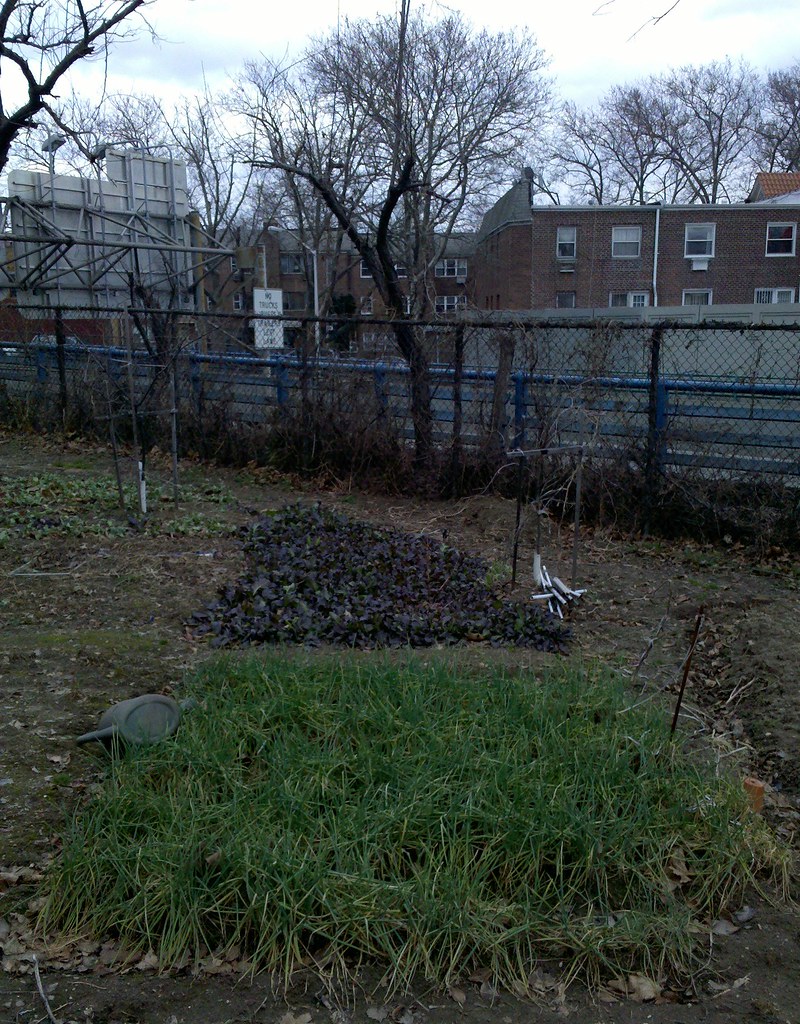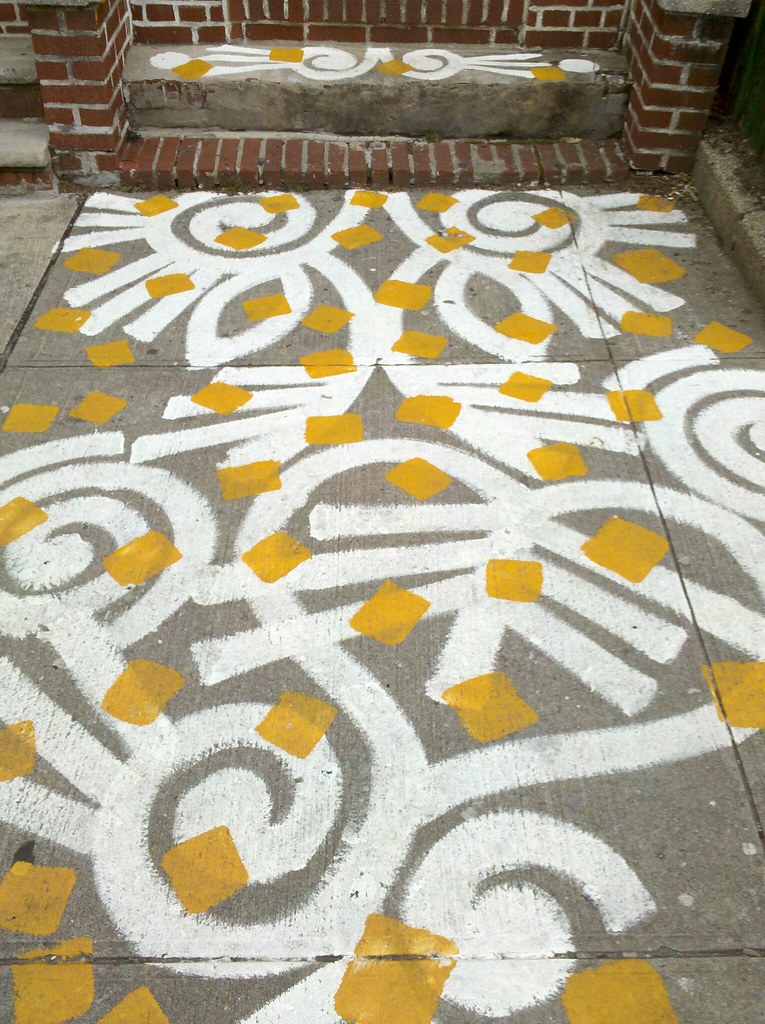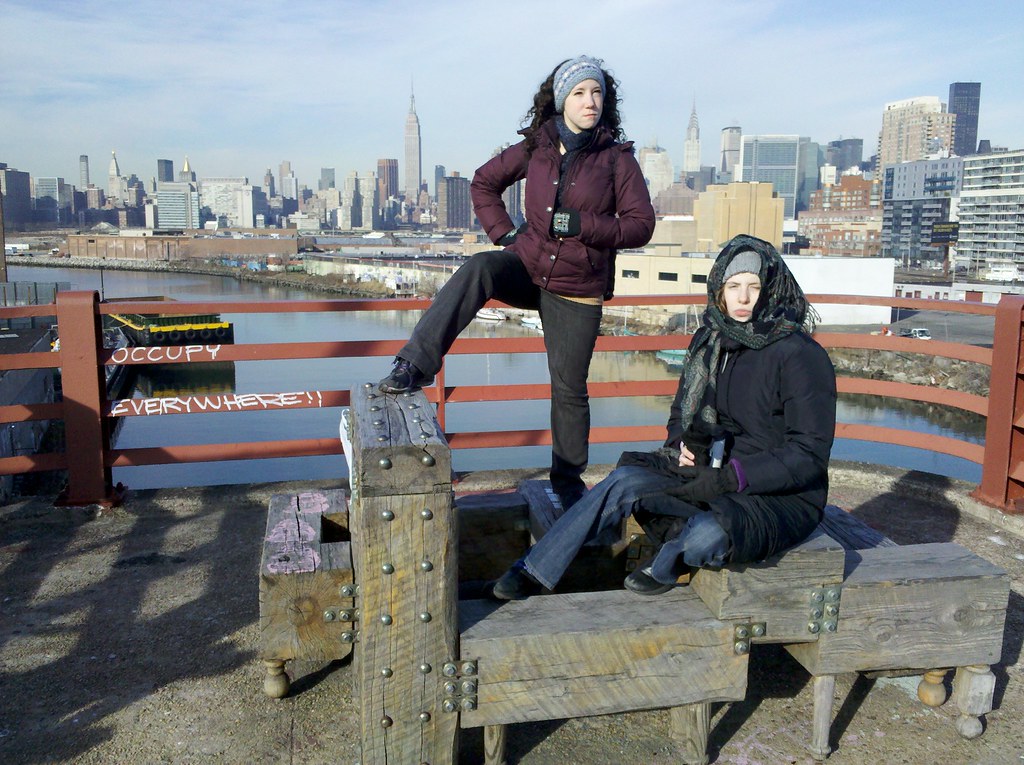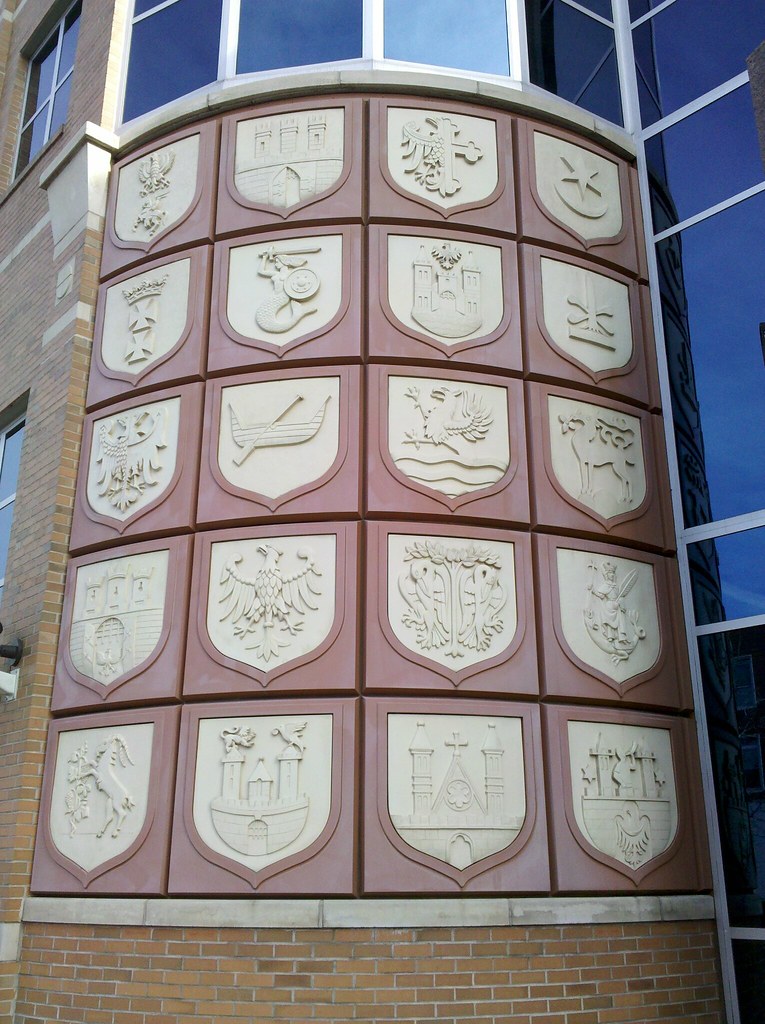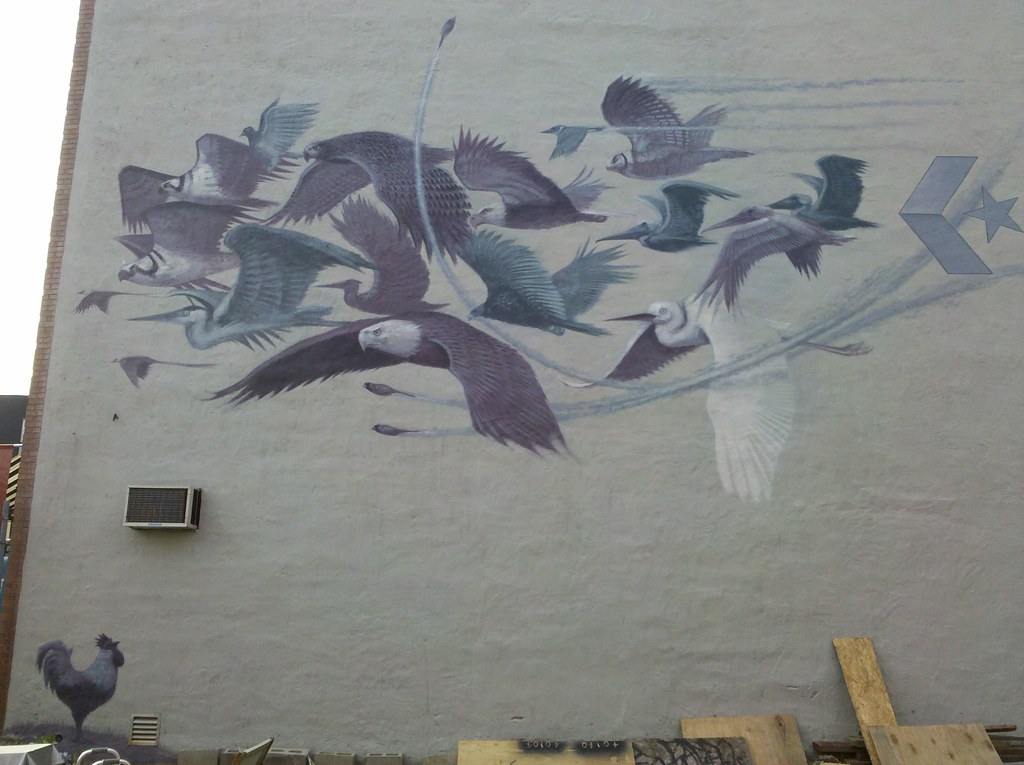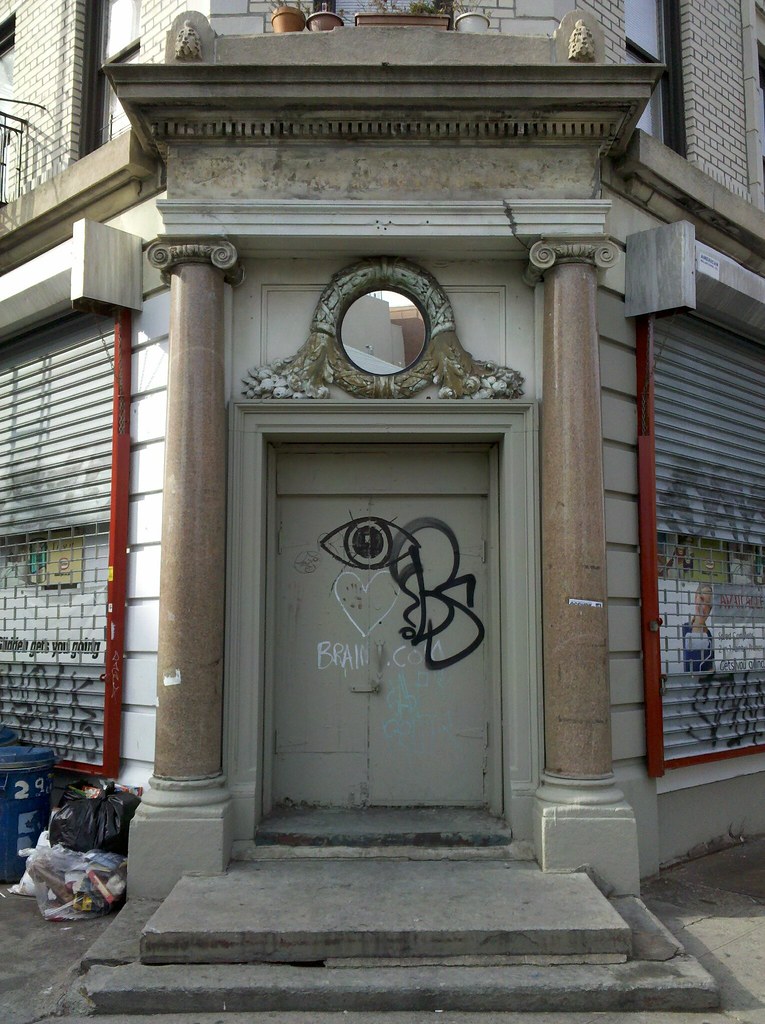
The caption on the sign didn't tell me much, so I had to climb up on, and balance atop, a bollard to get close enough to scan the QR code (which you can see at the bottom left of the sign in the previous photo) with my phone. Decoded, it read:
8 million swimming,
The traffic rolling like waves,
Watch for undertow.
It turns out that this sign is one of 200+ installed around the city (there are a dozen different haikus), intended to engage pedestrians and encourage safety. I was certainly engaged, although it's unlikely that perching atop a bollard to figure things out made me any safer.

I haven't seen a road like this since North Dakota. I needed to make it to the fence to check this dead-end street off my list; fortunately some weeds growing off to the left provided just enough support to make it over the water.
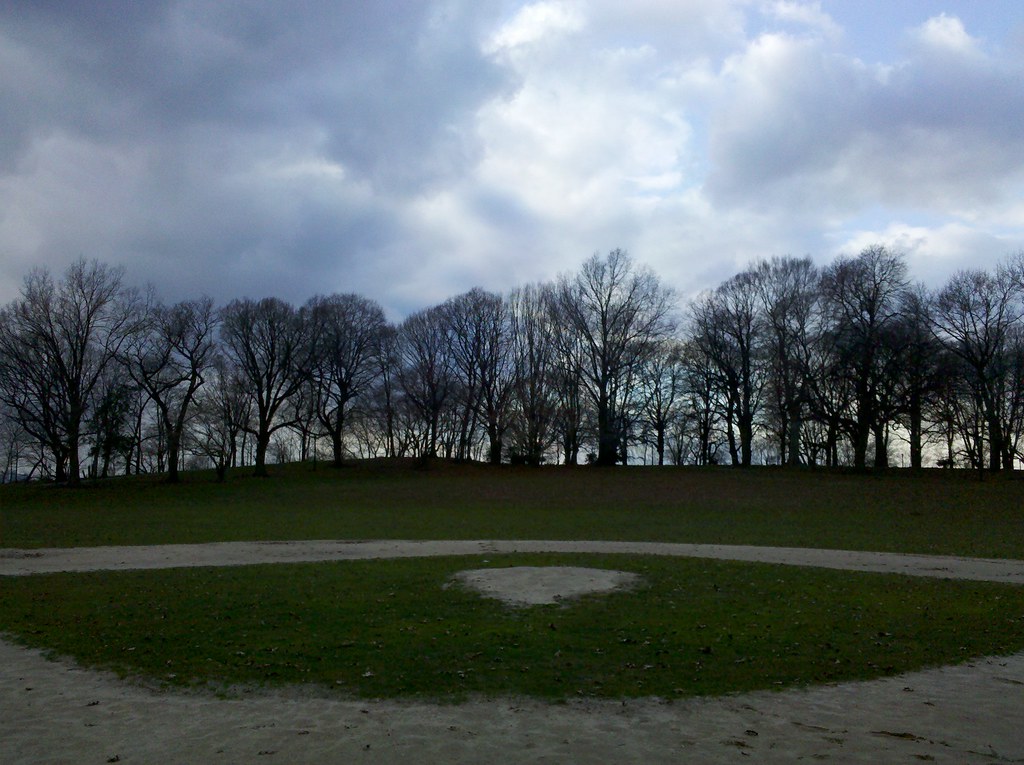
In this park once stood a stone mansion, built in the 1840s, that Mayor Fiorello LaGuardia used as his summer City Hall in 1937. The mansion was torn down a couple of years later, and in 1966 the park was renamed for the late Hermon Atkins MacNeil, a sculptor and former resident of College Point whose best-known work is the Standing Liberty quarter.
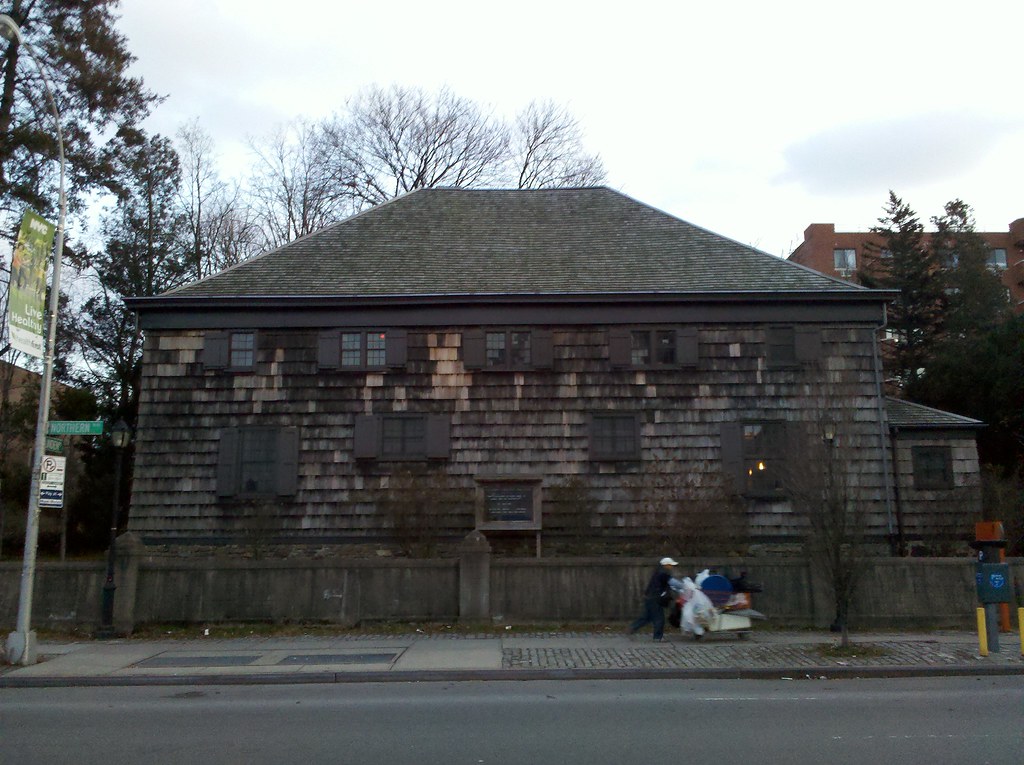
Built in 1694 in Flushing, it's the oldest house of worship in New York City. The history of the Quakers in Flushing is deeply tied in with the development of religious freedom in America.

From what I understand, these old-style call boxes with the handles (the ones that still work, that is) use an ancient mechanically triggered telegraph system to communicate with the Fire Department. Here's a great NY Times article from 1901 about this once cutting-edge technology.

Outside a tiny Parks Department green space on a traffic island. Perhaps the work of the animal-loving Henry Stern?

Site of the last one-room schoolhouse in Queens. The area inside the walkway is designated the "Phillip 'Earthman' Saccone Garden", "Earthman" being another nickname assigned by Henry Stern.

Given little attention by the city's Landmarks Preservation Commission, Queens started its own (short-lived) Queensmark program. I didn't know anything about this program until I noticed a plaque on the side of the house with the spiral Christmas lights in the yard. As it turns out, this entire block of houses was Queensmarked: "This row of Tudor style homes with tile roofs was built in the 1920s to cater to a middle class looking for a uniform, almost suburban ambiance."

After 60 years, there's a new design on the way. Some photos of its debut can be found here.

that these "rides" have managed to survive into the 21st century. I don't think I've ever seen one in use, but it's not at all uncommon to find one sitting on the sidewalk outside a bodega.
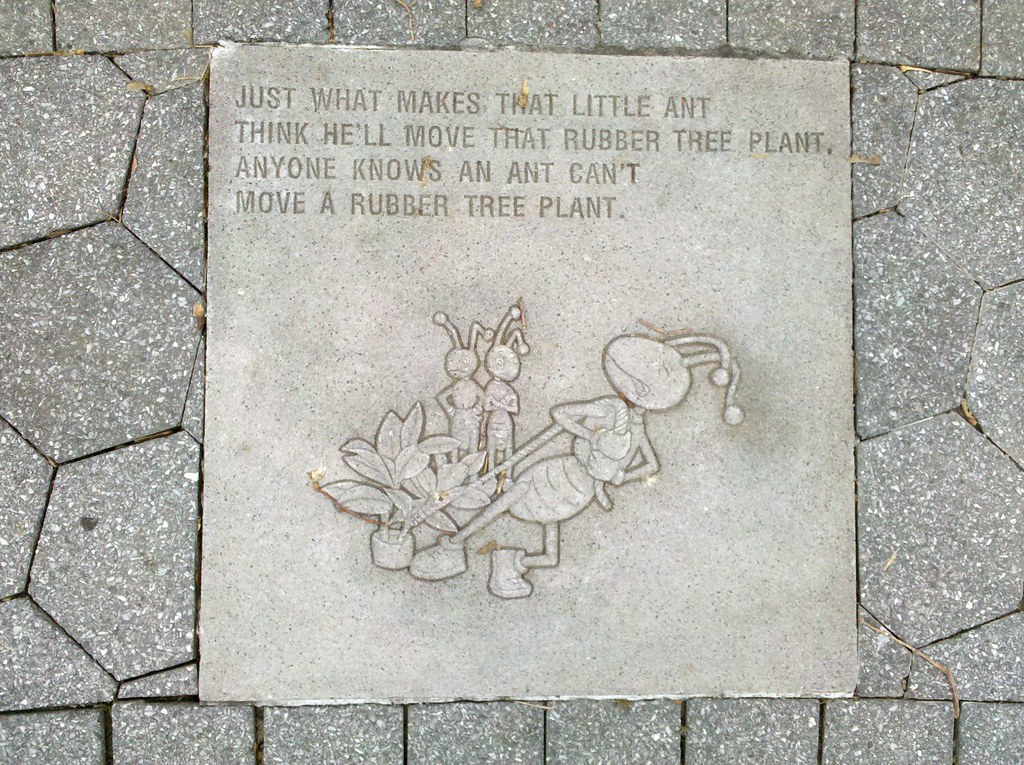
This oddball little parklet must be a Henry Stern creation. On the eastern side of the triangle, you'll find four illustrated concrete tablets inscribed with the lyrics of the first stanza of "High Hopes".

As far as I can tell, this is the only New York consulate outside of Manhattan.

The Blessed Father Jerzy, murdered by Polish secret police in 1984

This keeps each balcony open to the sky, which is important during Sukkot.

Erected in 1896, when Brooklyn was still an independent city. More info (and a more comprehensible view of the memorial) here.
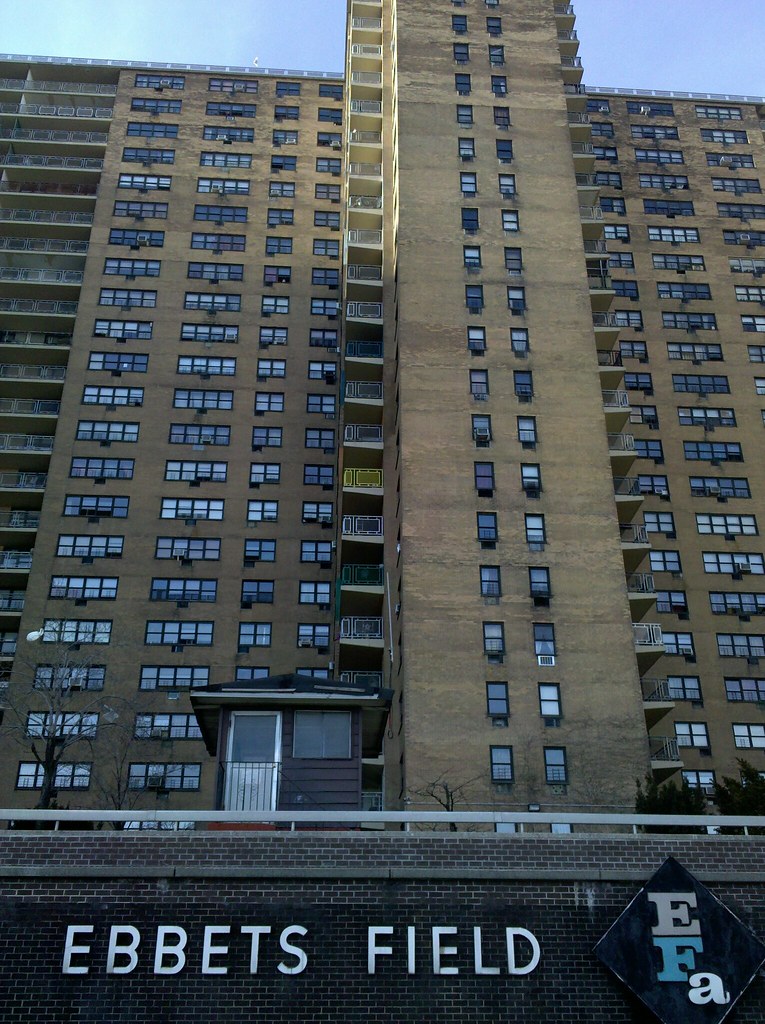
This high-rise housing complex stands on the former site of the storied Ebbets Field, the home of the Brooklyn Dodgers, where Jackie Robinson broke the baseball color line.
UPDATE: This is not the only place in the area whose name serves as a reminder that the Dodgers once played here. McKeever Place, the street that ran along the western side of Ebbets Field, is named for the brothers Steve and Ed McKeever, who helped finance the construction of the stadium by purchasing half of the team from Charles Ebbets. Across McKeever Place from the Ebbets Field Apartments are the Jackie Robinson School, Ebbets Field Middle School, and Jackie Robinson Playground. And a few blocks east of here is Dodger Playground.

Erasmus was founded in 1786! Some better-known alumni include Bobby Fischer, Mae West, Barbra Streisand, Neil Diamond, Bernard Malamud, and Mickey Spillane.
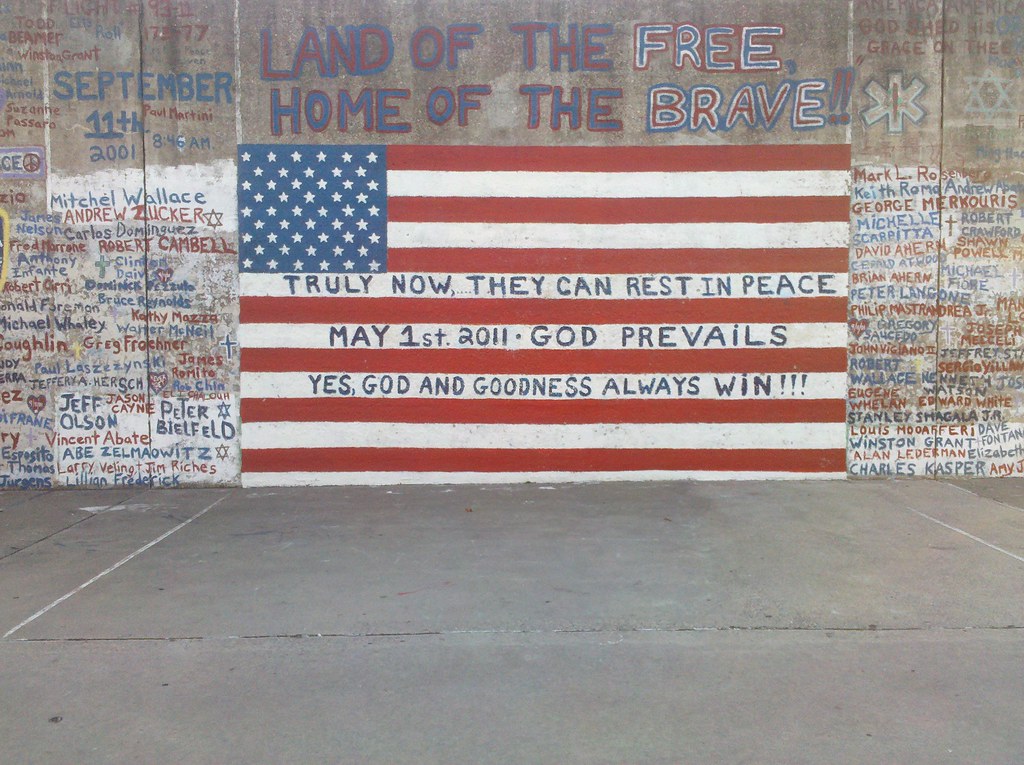
It takes up an entire side of a handball wall.
UPDATE: This!

